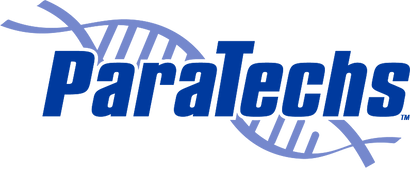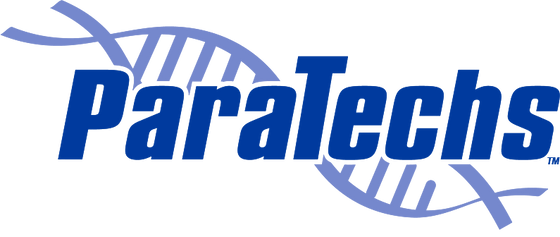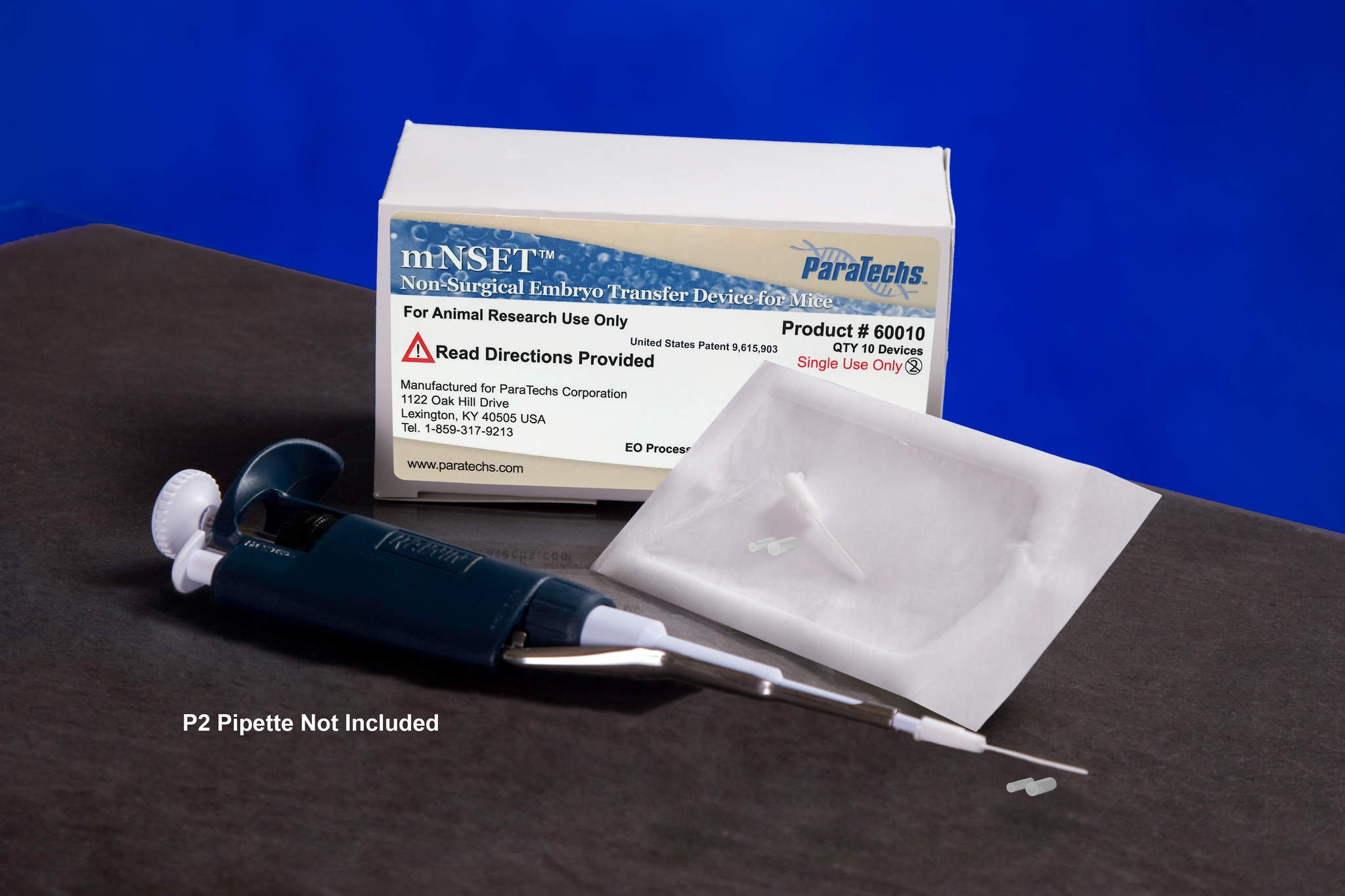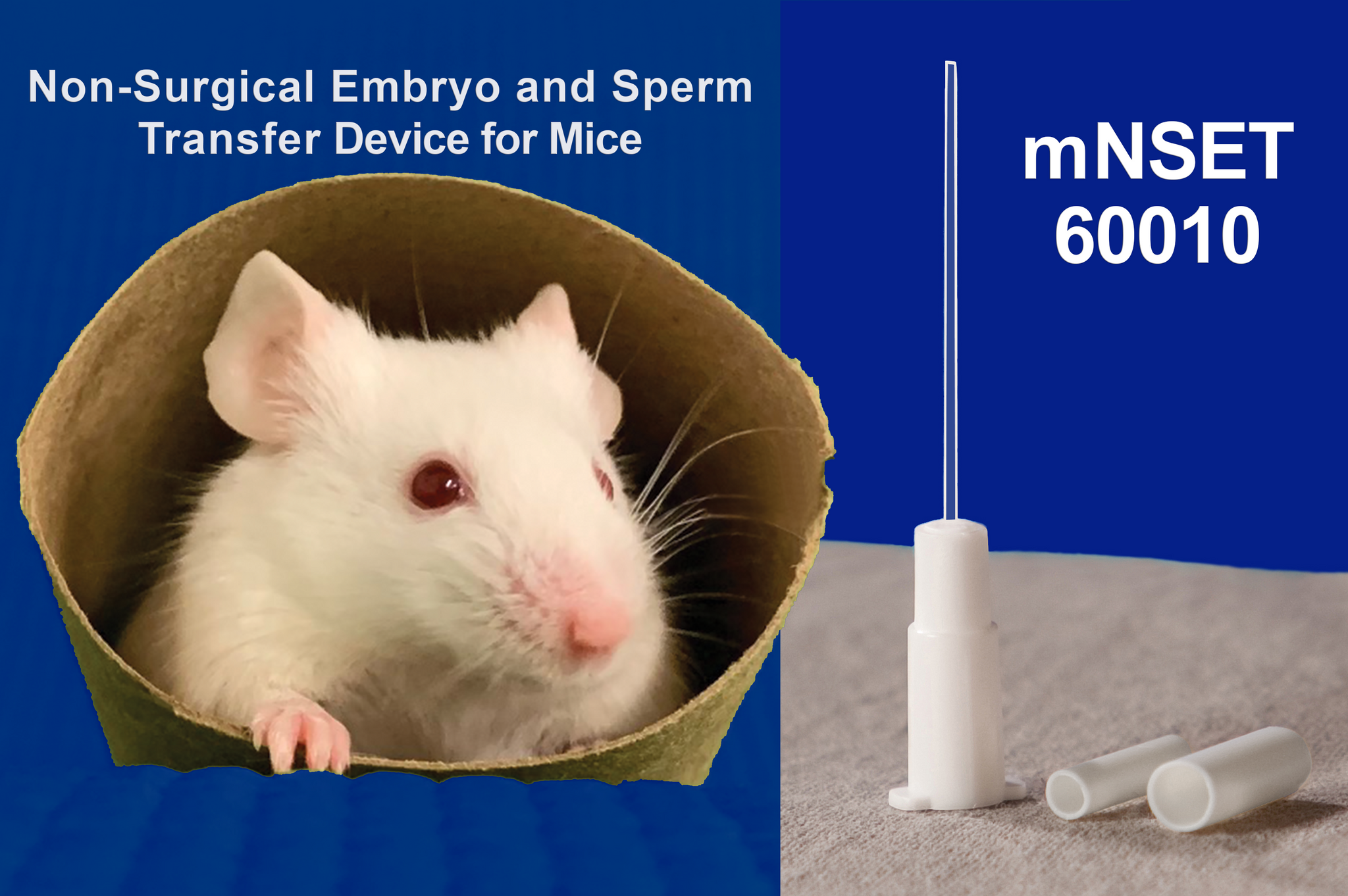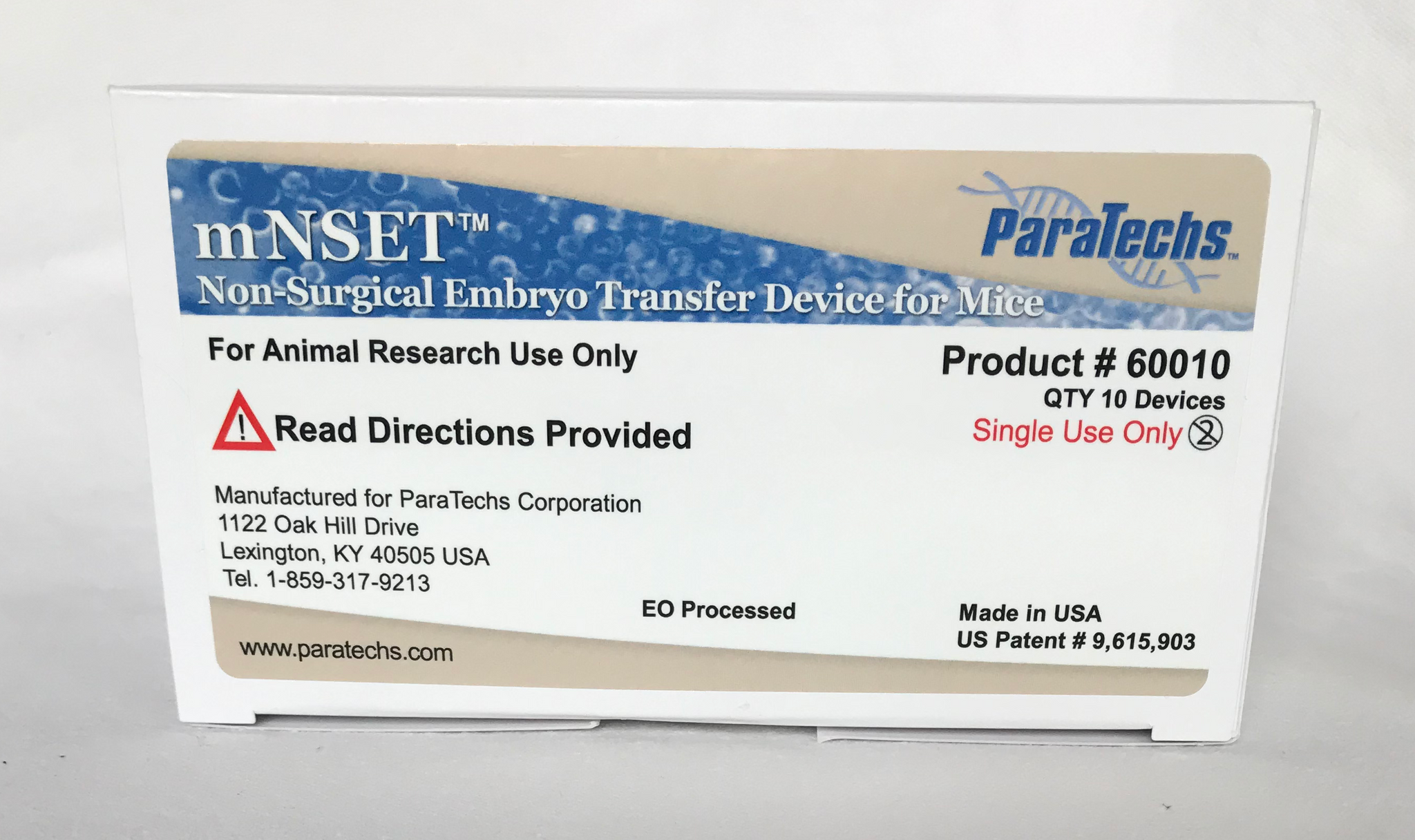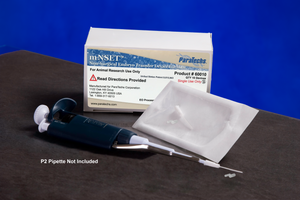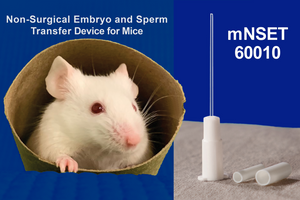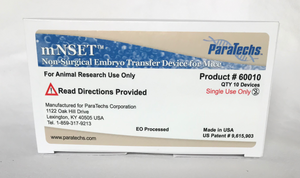+Products
+Resources
+Product Order Forms
+Customs Duties and Taxes on Imported Goods
International shipments are subject to customs duties and taxes. The Recipient (Importer) of such goods is responsible for paying all related charges. Please read our Goods Customs Duties and Taxes Statement. [PDF]
mNSET™ (Non-Surgical Embryo Transfer) Device for Mice 60010 (10 Devices per box)
60010 (10 devices per box)
$289.00
For AI and pathogen transfer, see product 60020.
10 Devices/Box
ParaTechs’ mNSET™ (Non-Surgical Embryo Transfer) Device for Mice 60010 revolutionizes mouse uterine embryo transfer by reducing cost and eliminates the need for animal anesthesia and recovery normally required for conventional surgical procedures. Compare this methodology with the time, expense, and training required to accomplish the same task with other methods and you will discover that the NSET procedure is humane, quick, and cost effective.
The mNSET Device for Mice 60010 is manufactured in the USA, solely for ParaTechs Corporation, by an FDA Registered Medical Device Manufacturer and ISO 13485:2003 Registered Company and is EtO (Ethylene Oxide) sterilization processed. Patent Information: Non-Surgical Embryo Transfer Method and Apparatus, United States Patent 9,615,903. [PDF]
Harmonized Tariff: 3926.90.9910
10% Discount on orders of 10 or more boxes. Discount applies automatically at checkout.
Watch the mouse NSET demonstration videos:
- mNSET 60010 Full Procedure Demonstration Video
- mNSET 60010 Quick Procedure Only Video
Watch ParaTechs' JoVE article "Inducing Pseudopregnancy in Female Mice Without the Need for Vasectomized Males Prior to Non-Surgical Embryo Transfer or Artificial Insemination"
- Author Spotlight
- Cervical Manipulation Procedure for Use with Artificial Insemination in CD1 Mice (CM Rod 90050) (mC&I Device 60020)
- Non-Surgical Embryo Transfer Procedure for Use with Cervical Manipulation in CD1 Mice (CM Rod 90050) (mNSET Device 60010)
Inducing Pseudopregnancy in Female Mice Without the Need for Vasectomized Males Prior to Non-Surgical Embryo Transfer or Artificial Insemination JoVE Published: July 7, 2023
Watch both webinars presented by Dr. Barbara Stone, Director of Rodent Assisted Reproductive Technologies, ParaTechs Corporation
- Rodent Embryo Transfer and the 3Rs
- The Future of Mouse Embryo Transfer: Achieving the 3Rs with the NSET Device
Labroots Webinar ABSTRACT: Non-surgical transfer techniques for mouse embryos and sperm provide animal welfare benefits for assisted reproduction of mice. While surgical embryo transfer (ET) is an effective method for transfer of embryos into the uterine horn of mice, surgery is expensive, time consuming, and requires technical expertise. Surgery is also a stressful procedure for the mouse, which has to be anesthetized and treated with an analgesic. We have developed a simple, brief procedure for ET using a non-surgical embryo transfer (NSET) device. Once embryos are loaded into the NSET device, the tapered NSET catheter passes through the vagina and traverses the cervix to deposit the embryos into the uterine horn of a recipient mouse. Since the NSET procedure does not require sedation, opening of the inner body cavity, or use of an analgesic, this procedure is less stressful for the mouse than surgery. In proof, our results show that when pseudopregnant mice are monitored by electrocardiography, the non-surgical procedure does not affect heart rate. The NSET procedure also has no effect on the level of the stress biomarker fecal corticosterone measured by ELISA analysis. However, surgery or anesthesia does lower heart rate and increases levels of fecal corticosterone. Additional studies show that the NSET procedure is effective for transfer of mouse embryos for the purposes of rederivation, cryorecovery, and transgenic research. Embryos can be successfully transferred with the NSET technique after cryopreservation, in vitro fertilization (IVF), or embryonic stem (ES) cell injection as an alternative to traditional surgical embryo transfer. The NSET device has also successfully transferred mouse sperm for artificial insemination. Therefore, the NSET technique is an example of a 3Rs refinement, an alternative to a surgical procedure, which will lead the way for improved assisted reproductive techniques in mice.
Mouse Embryo Transfer:
- Embryo transfer after DNA microinjection
- ES cell chimeric blastocyst transfer
- Cryopreserved embryo transfer
- Embryo transfer after in vitro fertilization
- Embryo transfer for rederivation
Other:
- Small volume material transfer to the uterine horn. For larger volume transfer, please consider the mC&I device which has a 40µl capacity.
- Mouse Sperm Transfer for Artificial Insemination (AI): Fresh sperm
- Pathogen Transfer: Chlamydia trachomatis
- Material Transfer:
- Decidualization procedures
- Pharmaceuticals
- Eliminates the pain and distress of surgery
- No anesthesia required
- Eliminates need for post-surgical monitoring of animals
- Reduces regulatory burden by eliminating need to justify survival surgery
- Eliminates surgical instruments and time-consuming pre- and post-surgical processes
- Greatly reduces time required to become proficient in embryo transfer or artificial insemination (AI)
- Reduces costs of embryo transfer
- Reduces costs of AI
- Easy procedure
- Convenient
- Sterile and ready to use
- 3Rs implementation (Reduce & Refine)
